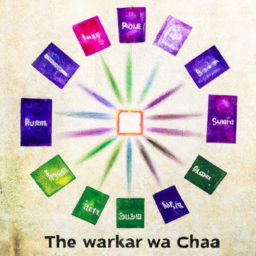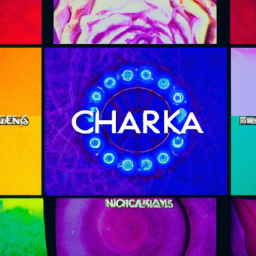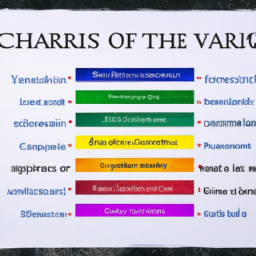The concept of chakras energy originates from ancient Indian and Ayurvedic traditions. In Sanskrit, chakra translates to “wheel” or “disk”, and it refers to the seven energy centers in the body. These energy centers are believed to be responsible for the flow of vital energy, known as prana, throughout the body.
Each chakra is associated with specific physical, emotional, and spiritual aspects of our being. When all chakras are balanced and aligned, we are said to experience a sense of overall well-being and harmony. However, if one or more chakras are blocked or out of balance, it can lead to physical and emotional imbalances, which can manifest as various physical or psychological symptoms.
The Seven Chakras and Their Meanings
Let’s explore each of the seven chakras and their meanings, starting from the base of the spine and moving up to the top of the head:
1. Root Chakra (Muladhara)
The first chakra, located at the base of the spine, is associated with the color red. It is linked to our sense of security, stability, and survival instincts. When this chakra is balanced, we feel grounded, confident, and supported. An imbalance in this chakra can lead to feelings of fear, insecurity, and restlessness.
2. Sacral Chakra (Svadhisthana)
The second chakra, located in the lower abdomen, is associated with the color orange. It is connected to our creativity, sexuality, and emotions. A balanced sacral chakra allows us to express our emotions freely, engage in healthy relationships, and tap into our creative potential. An imbalance in this chakra can lead to emotional instability, sexual issues, and creative blocks.
3. Solar Plexus Chakra (Manipura)
The third chakra, located above the navel, is associated with the color yellow. It is linked to our sense of self-esteem, confidence, and personal power. A balanced solar plexus chakra allows us to feel in control of our lives and make decisions with clarity. An imbalance in this chakra can result in low self-esteem, insecurity, and a lack of motivation.
4. Heart Chakra (Anahata)
The fourth chakra, located in the center of the chest, is associated with the color green. It is connected to our ability to love, forgive, and feel compassion. A balanced heart chakra allows us to form meaningful connections, feel empathy, and experience unconditional love. An imbalance in this chakra can lead to difficulties in relationships, trust issues, and a lack of self-love.
5. Throat Chakra (Vishuddha)
The fifth chakra, located in the throat area, is associated with the color blue. It is linked to our ability to communicate, express ourselves authentically, and speak our truth. A balanced throat chakra allows us to communicate effectively and find our voice. An imbalance in this chakra can result in difficulties expressing ourselves, fear of speaking, and communication issues.
6. Third Eye Chakra (Ajna)
The sixth chakra, located in the center of the forehead, is associated with the color indigo. It is connected to our intuition, imagination, and wisdom. A balanced third eye chakra allows us to trust our inner guidance and tap into our intuition. An imbalance in this chakra can lead to a lack of clarity, confusion, and an inability to trust one’s own instincts.
7. Crown Chakra (Sahasrara)
The seventh chakra, located at the top of the head, is associated with the color violet. It is linked to our spirituality, connection to a higher power, and universal consciousness. A balanced crown chakra allows us to experience a sense of unity with the universe and a deep understanding of our purpose in life. An imbalance in this chakra can result in feelings of disconnection, lack of spiritual guidance, and a sense of purposelessness.
How to Balance Your Chakras
There are various ways to balance and align your chakras, including meditation, yoga, chanting, and visualization. These practices can help activate, open, or balance the flow of energy in each chakra.
Another popular way to balance chakras is through energy healing techniques, such as Reiki, which involves the transfer of universal life force energy to facilitate healing. It is essential to remember that everyone’s experience with chakras is unique, and what works for one person may not work for another. Therefore, it is crucial to explore and find what resonates with you.
Achieving Chakra Balance for Overall Well-being
In conclusion, chakra energy is a vital aspect of our physical, emotional, and spiritual well-being. Understanding and working with chakras can help us achieve a sense of balance and alignment in all areas of our lives. By keeping our chakras in balance, we can experience a greater sense of vitality, emotional stability, and spiritual growth.






Great information – so interesting to learn about energy!
person2: Fascinating! I’m eager to learn more about chakras and how they can help us in our daily lives.
Very informative post – this is an awesome introduction to understanding the chakras!